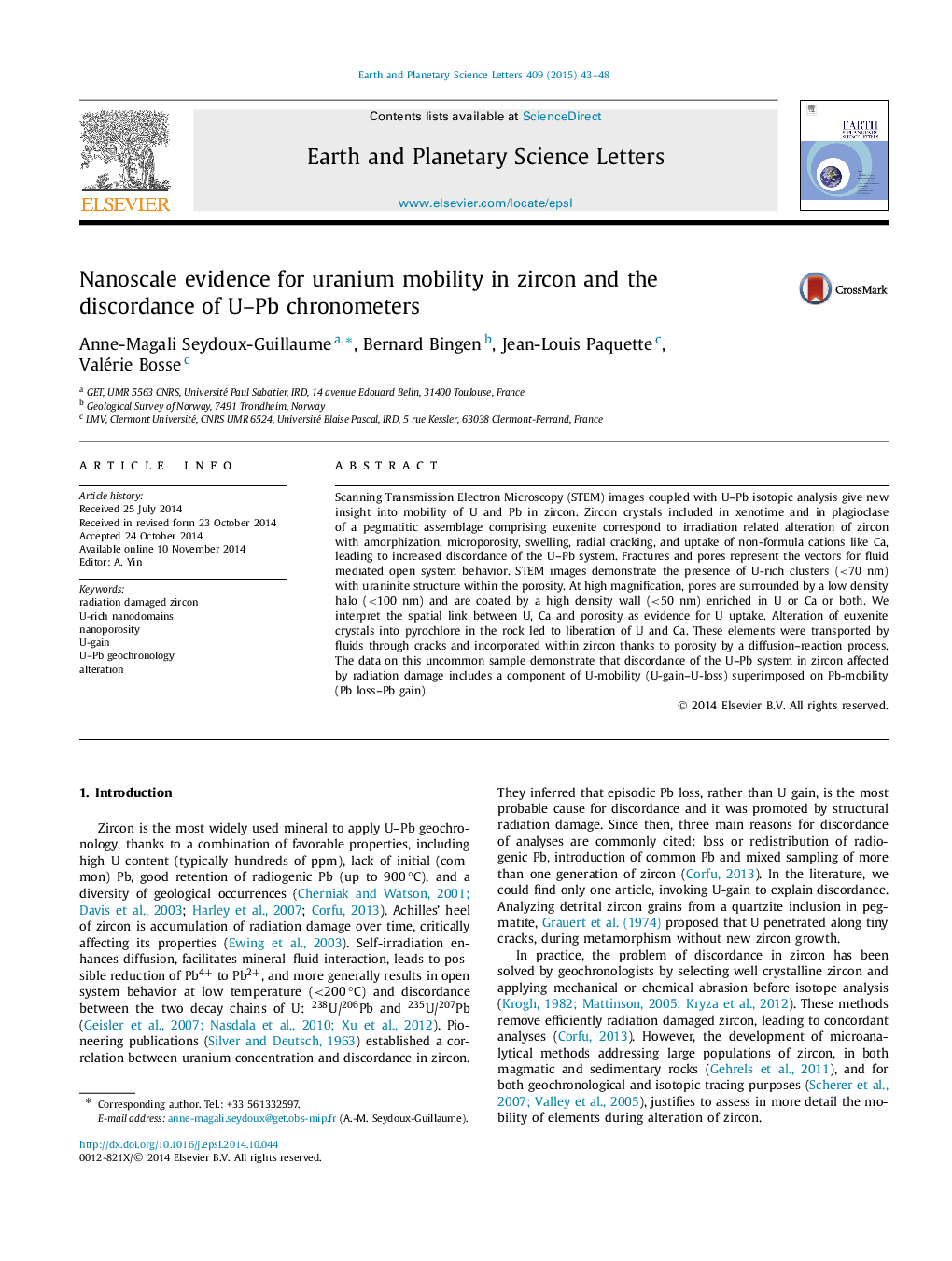| Article ID | Journal | Published Year | Pages | File Type |
|---|---|---|---|---|
| 6428810 | Earth and Planetary Science Letters | 2015 | 6 Pages |
â¢U-rich nano-domains are located within the porosity of radiation damaged zircon.â¢U and Ca are transported through cracks and pores within self-irradiated zircon.â¢Discordance of the U-Pb system in radiation damaged zircon includes U-gain.â¢Alteration of euxenite crystals leads to liberation of U and Ca.
Scanning Transmission Electron Microscopy (STEM) images coupled with U-Pb isotopic analysis give new insight into mobility of U and Pb in zircon. Zircon crystals included in xenotime and in plagioclase of a pegmatitic assemblage comprising euxenite correspond to irradiation related alteration of zircon with amorphization, microporosity, swelling, radial cracking, and uptake of non-formula cations like Ca, leading to increased discordance of the U-Pb system. Fractures and pores represent the vectors for fluid mediated open system behavior. STEM images demonstrate the presence of U-rich clusters (<70 nm) with uraninite structure within the porosity. At high magnification, pores are surrounded by a low density halo (<100 nm) and are coated by a high density wall (<50 nm) enriched in U or Ca or both. We interpret the spatial link between U, Ca and porosity as evidence for U uptake. Alteration of euxenite crystals into pyrochlore in the rock led to liberation of U and Ca. These elements were transported by fluids through cracks and incorporated within zircon thanks to porosity by a diffusion-reaction process. The data on this uncommon sample demonstrate that discordance of the U-Pb system in zircon affected by radiation damage includes a component of U-mobility (U-gain-U-loss) superimposed on Pb-mobility (Pb loss-Pb gain).
Graphical abstractDownload high-res image (157KB)Download full-size image
